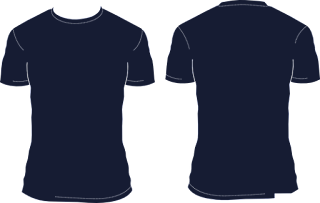Dry out Cleaning - Where All this Began And How It Can Benefit Anyone
For as long as people have been donning clothes, people have also been cleaning clothes. Whether you're an individual whose life depends on the washing machine to push through foothills of clothes, or if you're a person who enjoys the simple method of a fantastic old hand wash, it is always a weekly négliger that we cannot escape via. In modern days today we have dry cleaning at each of our finger tips and there's this sort of variety of services to choose from, nevertheless how did it all get started?
The history of dry washing stems back to 79 ADVERT in Ancient Rome, wherever early cleaners were tackled as "Fullers". They employed a combination of ammonia, lye plus a clay called "fuller's earth" to absorb dirt from their outfits.
In the 17th - eighteenth Centuries cleaning methods developed and cleaners would utilize non - water structured solvents to remove unwanted spots like soil from a array of different garments. In 85, Jean Baptiste Jolly was obviously a French dye-works operator, who have recognised the potential in applying petroleum-based solvents like gas and kerosene, to remove spills instead. This service is the first manifesto of 'dry cleaning' that still provides familiar service we make use of today. However as the oil solvents caused so many explosions and fires due to flammability, strict government regulation's needed to be set in place.
Due to this, any dry cleaner from Atl named William Joseph Stoddard, developed a white heart solvent as an alternative to the fuel based solvents that were remarkably flammable. From here on out and about cleaning methods continue to advance. Although in 1939, Entire world War II lead to gas shortages which meant which Tetrachloroethylene (perchloroethylene), commonly known as perc in short, became the most popular solvent. ?t had been non - flammable along with provided the highest standard for cleaning power, and thanks to this kind of professional cleaners were are generally move back into the urban centers.
Now days, at home you would normally wash your clothes in a hotpoint washing machine and then tumble dry these people, however a Dry Washing machine takes both of these techniques and combines them as one.
Garments are placed in the central of the machine within a cleansing chamber known as the "basket" or "drum", which is cut and rotates within an outside shell that holds the solvent. Typically the chamber is filled with one-third involving solvent and starts for you to rotate, keeping the solvent temp at 30 degrees Celsius. During the cycle the solvent in the chamber (also termed as the "cage" or "tackle box") is passed backward and forward through a filtration chamber plus the cage itself. This is generally known as the wash cycle.
Ahead of any garment is rinsed it must be thoroughly checked for virtually any foreign objects that may be obscured in the pockets. Items like plastic-type material pens will easily melt within the solvent which in turn may well damage and ruin the clothes to the point where they need to be discarded. The rule of dim colours to be separated by light colours is still employed as the dye can get rid of when exposed to the solvent. Before any dry clean-up takes place, items must be looked at against their compatibility being a lot of fastenings are not generally solvent proof, or just will not be able to withstand the clean up cycle. If this is the case they will be either be taken off and attached back about after the cleaning has concluded, or will be protected just where possible.
After the wash period comes the rinse routine, where the garment is washed with a fresh distilled solvent, which prevents discoloration through soiled particles. Then following your rinse cycle, the machine will start the extraction process, which often gathers all the solvent intended for reuse. Once the solvent has become drained the drying circuit takes over and the garments are generally tumbled in warm air that will flows through the basket. Throughout modern dry cleaning products use a closed-loop system which suggests the chilled air might be reheated and re-circulated, providing a reduction in air pollution and larger solvent recovery. Once the machine drying cycle is complete typically the aeration cycle cools the clothes and continues to remove any additional traces of solvent. The clothes are then ready to always be pressed and finished.
Although powerful method of dry cleansing has been highly regarded to remove staining with one wash, its not all stains can be removed simply by dry out cleaning. Some stains should particular treatments such as precise spotting with solvents, employing a stream jet to shot the stain, or a fine soak in a specialised discoloration remover, all of which will need to have also been actioned before the item is usually put through the wash spiral. Garments that have been soiled for years are even more troublesome in relation to stain removal, yet in the event that successfully removed there is a very likely hood that the colour or maybe texture of the garment will not the same.
Let's take a check out more details about upon Custom Suit Toronto




Comments
Post a Comment